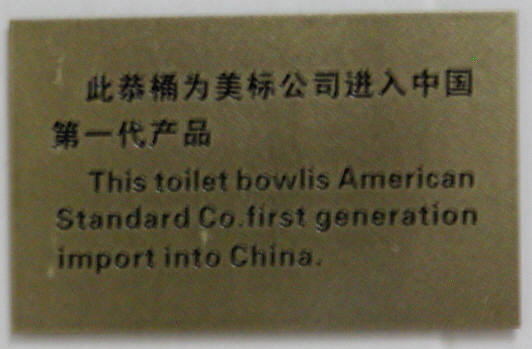
| page 1 | page 2 | page 3 | page 4 | page 5 |
| page 6 | page 7 | page 8 | page 9 | page 10 |
We stayed at the Donhu Hotel, on Donhu Road (Avenue Joffre when the French ruled). The hotel management is proud of the America Standard toilet bowl and posted this golden plaque above the toilet bowl.

In the hotel, I checked out the many television channels. Whereas on South Korean television the superior yells at the subordinate, and the subordinate looks down and does not answer back, on Chinese television people argue heatedly and even fight. One old woman grabbed a big stick and was chasing her husband to attack him.
An example of the European old style and the modern new style. Note that the European old style stress linearity, while the modern new style incorporates a sweeping curve (and participates in the Asian gravitation toward the circle). The traditional philosophy of building, feng shui (风水) teaches that evil spirits can only travel in straight lines, and therefore curves provide a better living space.
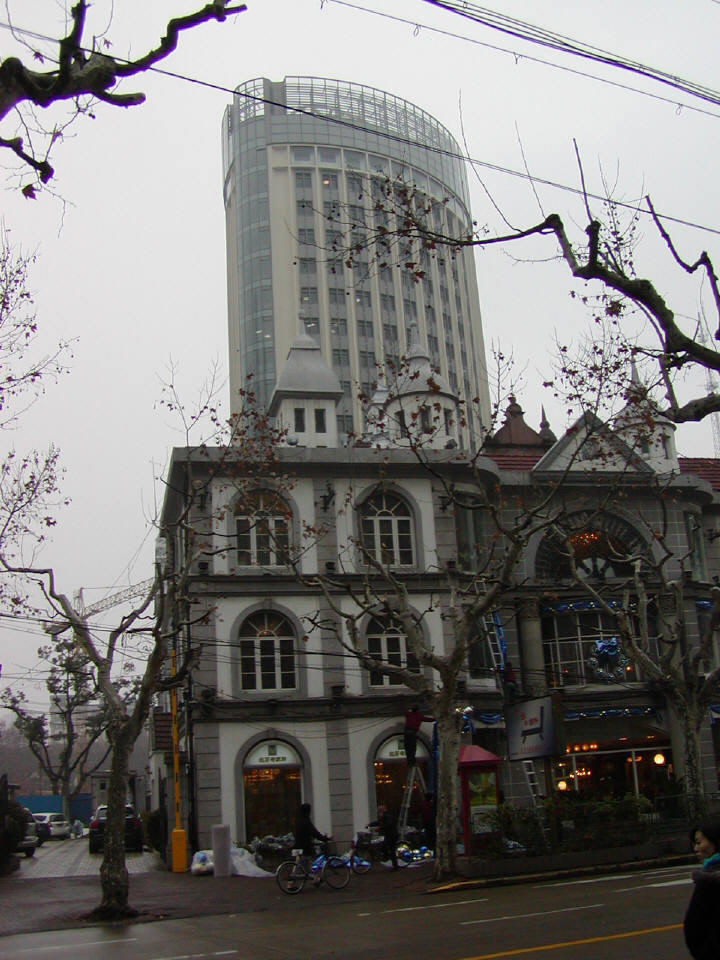
Curves also provide a better airport space
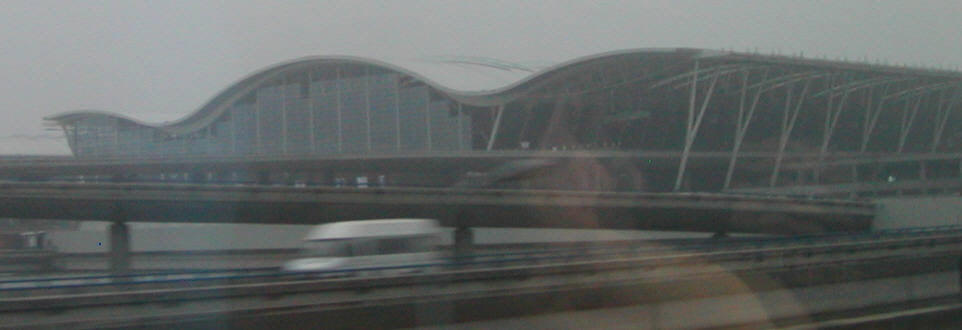
Mike Lai, expatriot (expat) U.S. citizen working in Shanghai, with Sarah. Note the broad sidewalk has a yellow box with an "x" inside to indicate a crossing of pedestrians and vehicles.
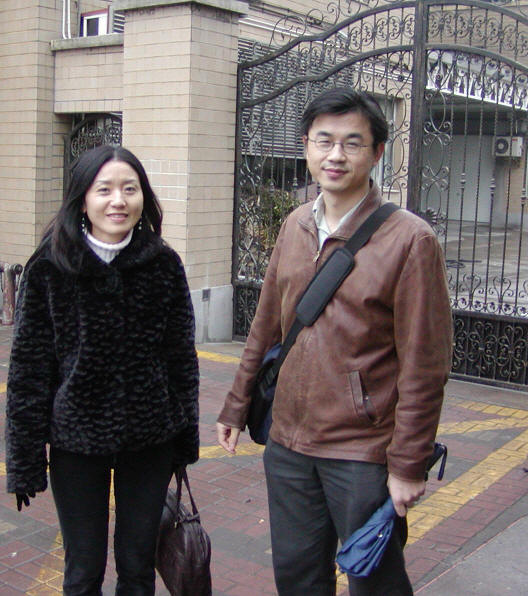
Thomas and Mike
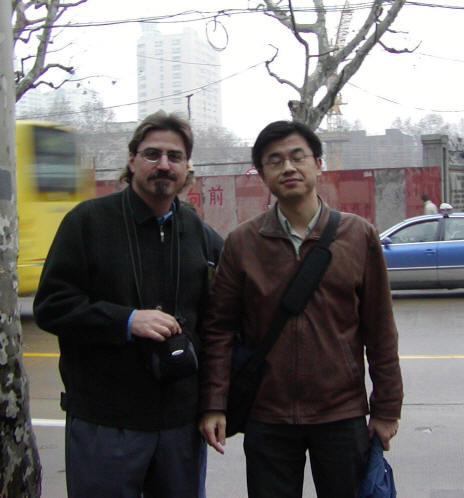
In the subway (metro), floor signage indicates where to stand while waiting for people to exit. I think the four rows of bumps are to help blind people find their way and avoid falling into the tracks. (The most crowded stations in Shanghai and Seoul even have plexiglass barriers that open only when the train doors open.)
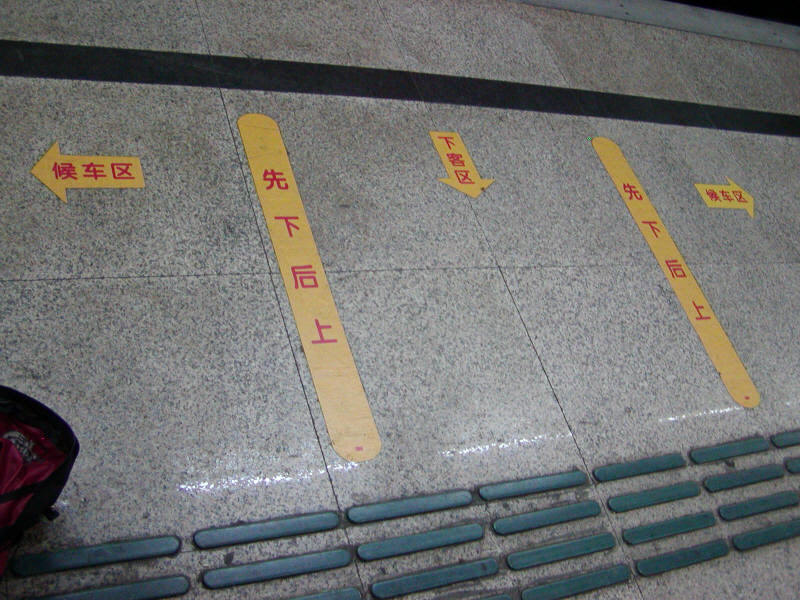
Subway stations have maps in Mandarin and English. Note that the direction of
North changes.
Note also the use of the red circle to indicate
one's present presence.
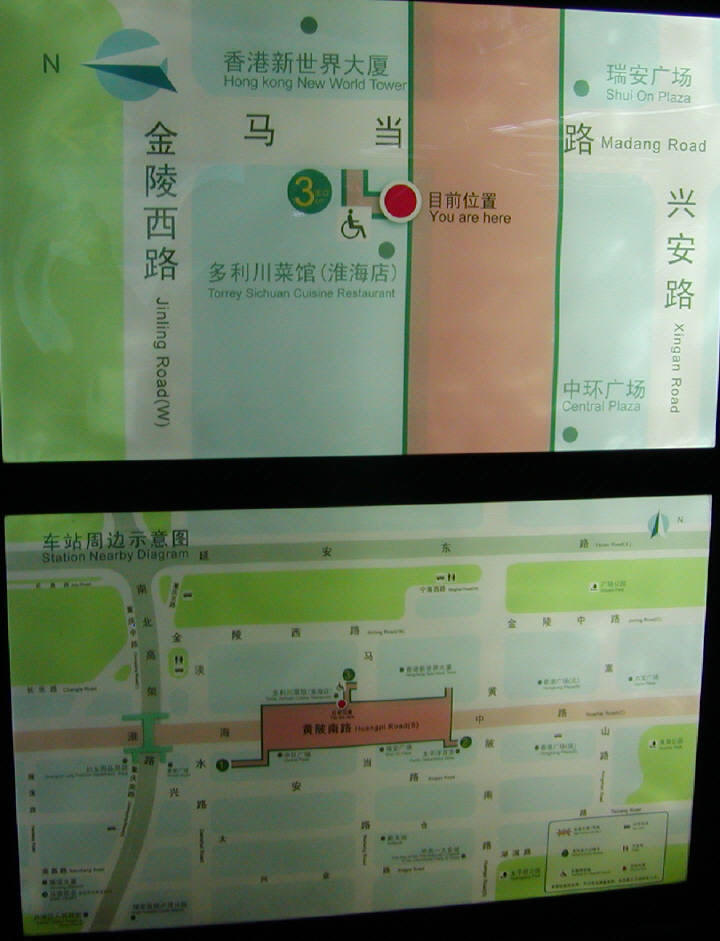
Our Hotel is a "model unit"
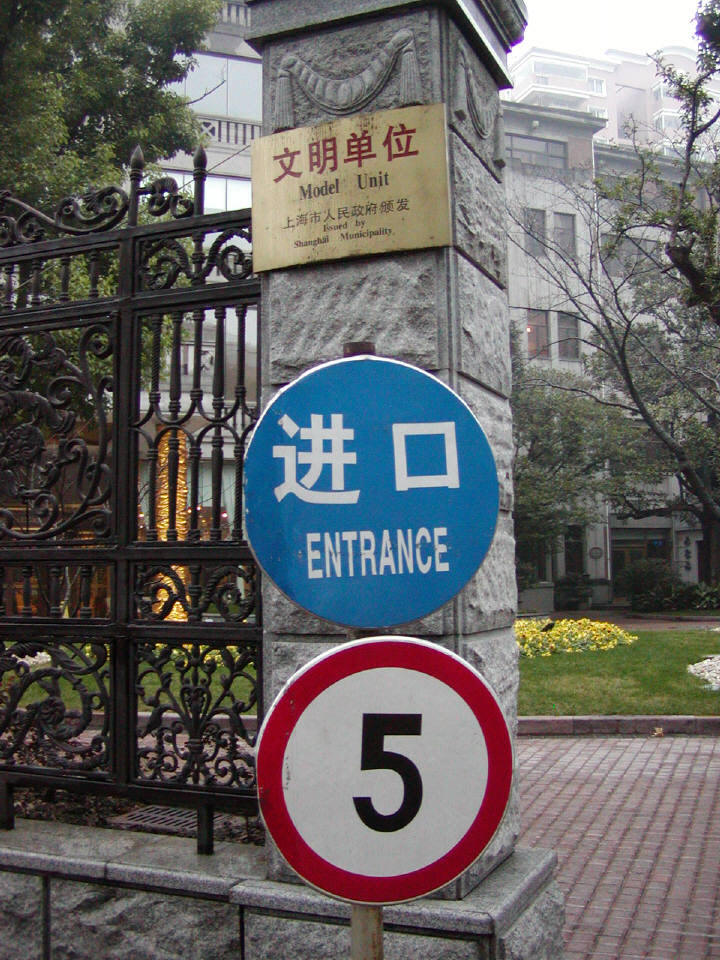
The fire hose "fire hydrant" for the firemen. To call them, the number is not 911 but its opposite, 119
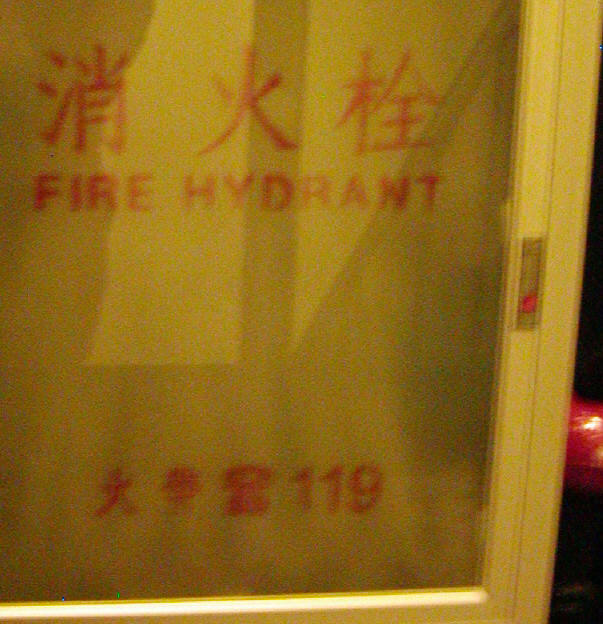
The red circle is fundamental to Chinese culture, and might have originated in the idea of the sun as source of life and warmth, as in the artist's seal in this traditional painting
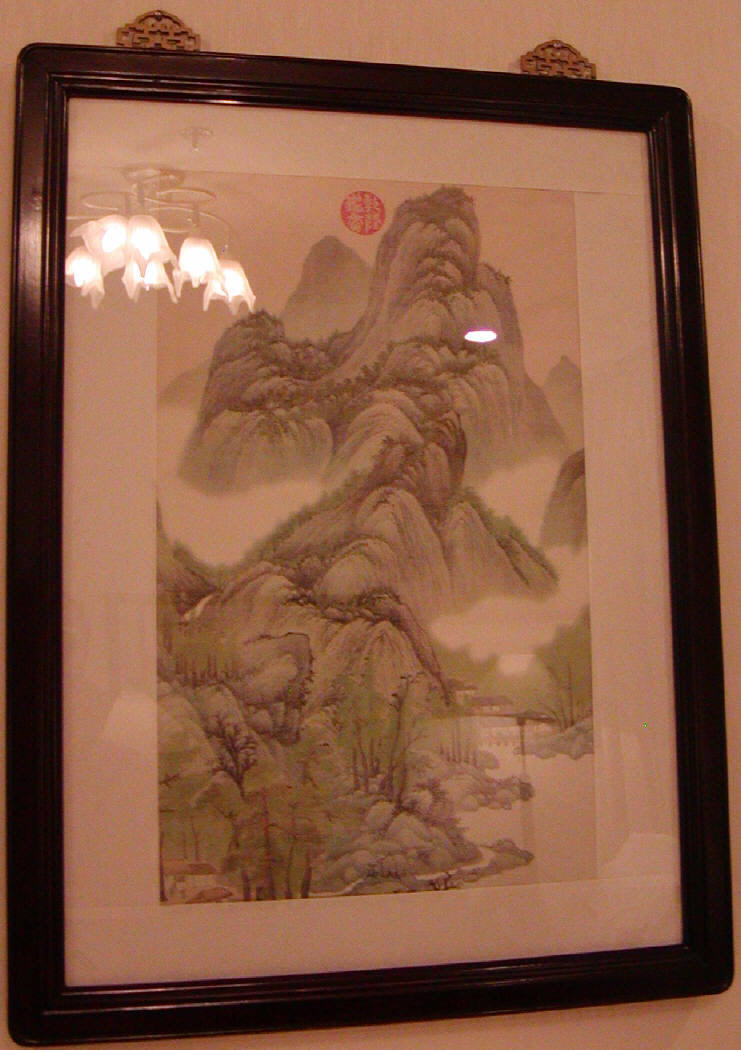
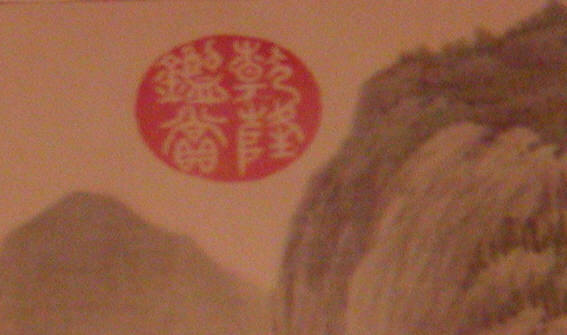
The Japanese national flag, military flag, emperor's flag, and post-war military flag.
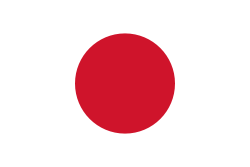
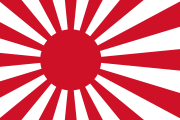
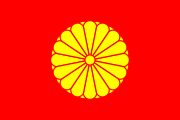
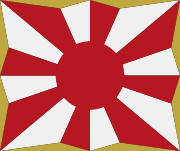
The circles of Japanese cities Osaka and Nagoya
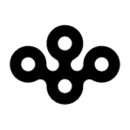

Chinese money is traditionally circular and the name of the monetary unit, be in Chinese yuan, Korean won, or Japanese yen, means "circle"
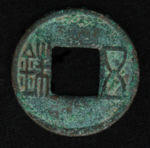
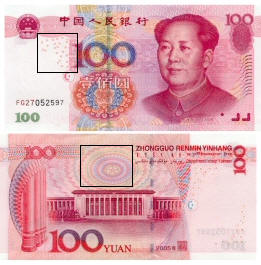 |
Modern Chinese money has a pattern of circles to ensure authenticity (make it difficult to conterfeit) and to enclose the star of the ruling Communist Party |
Or, perhaps the origin of the circle is the Buddhist mandala
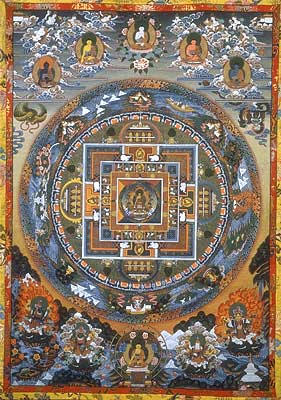
The Red Circle is also the socialist society in which people form the circle
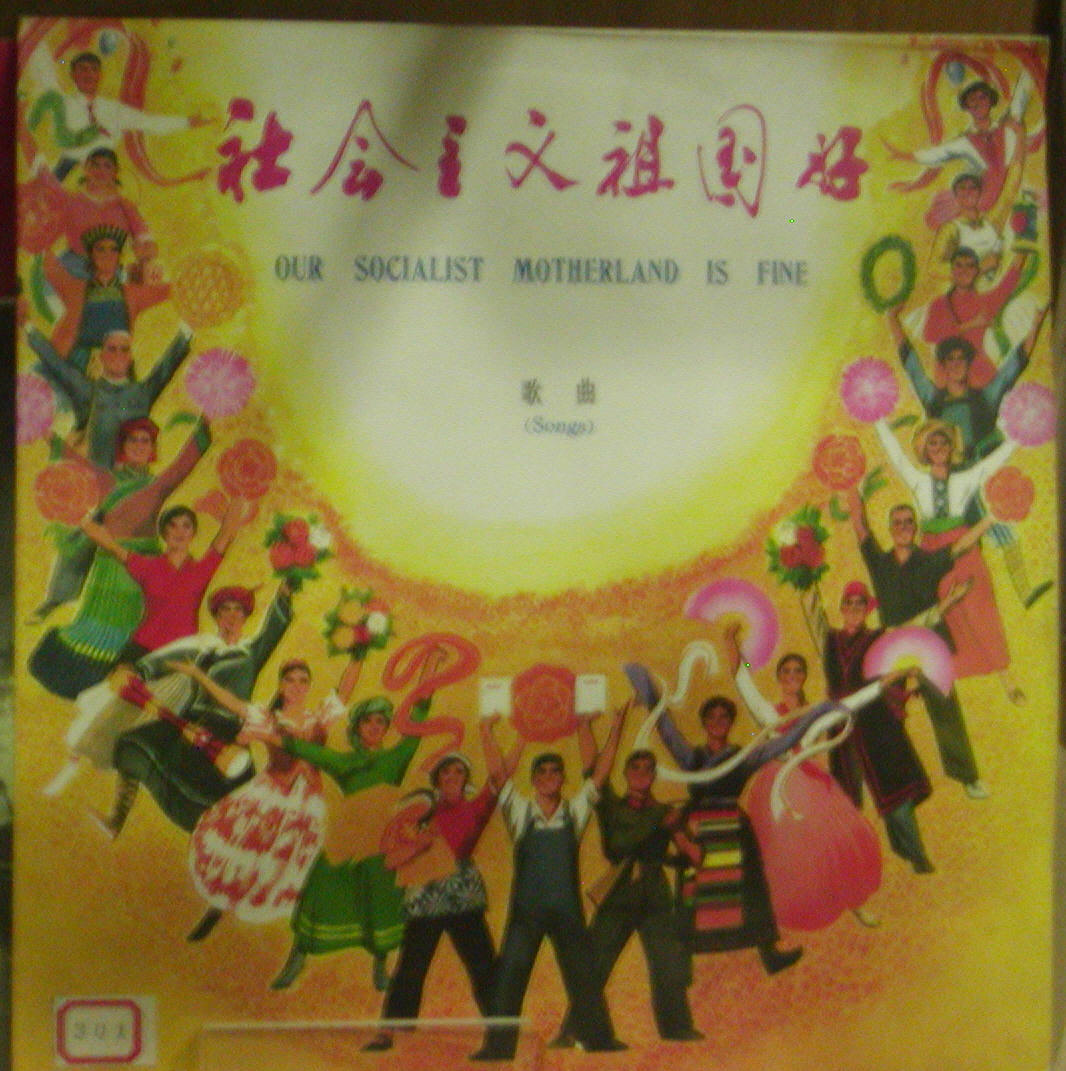
Circle is a good shape for a sink
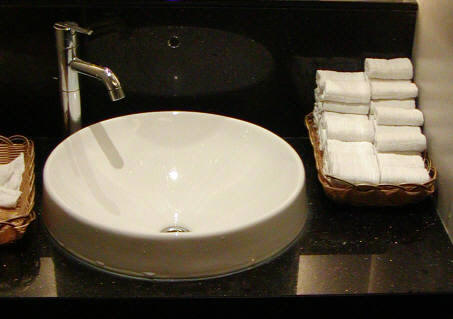
Red circle tower hamper
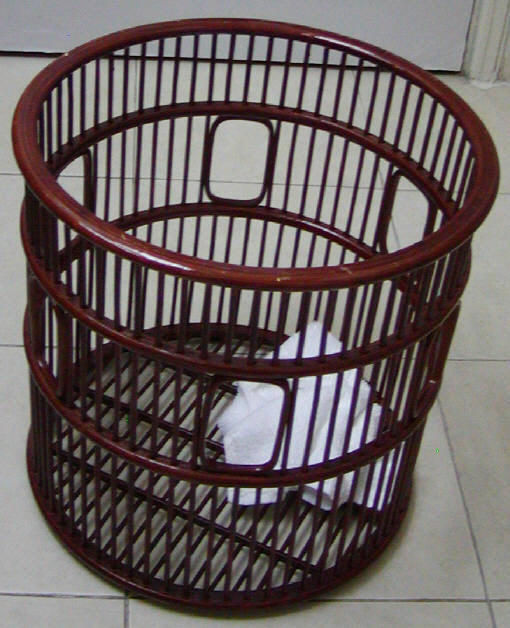
Red and yellow circles for a motorcycle flap
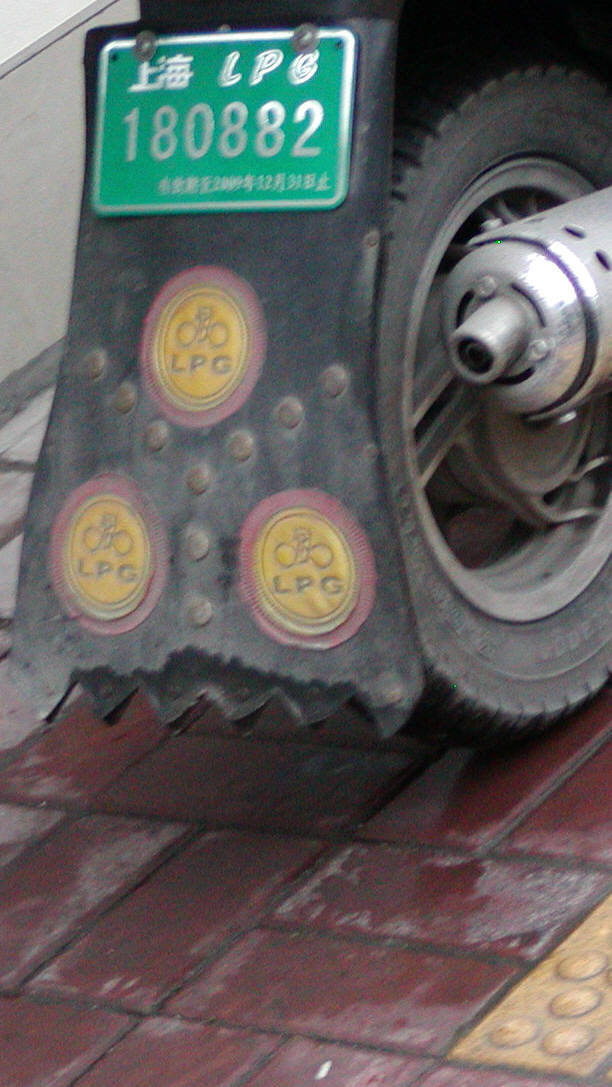
The red circle is the voice of social authority
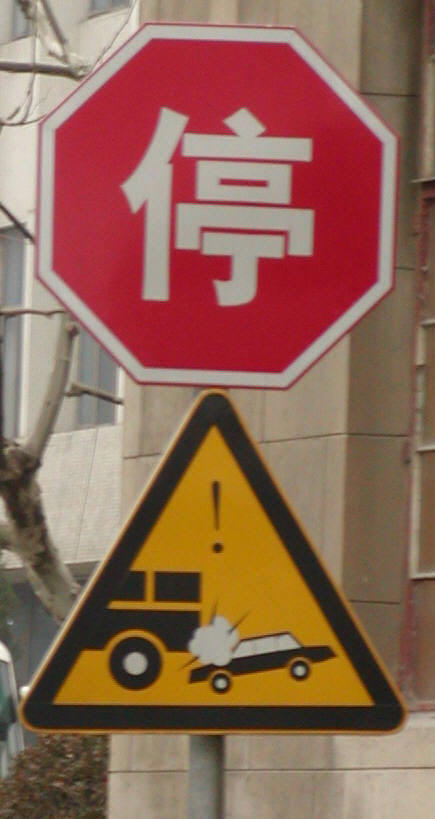
The circle is the shape of communication
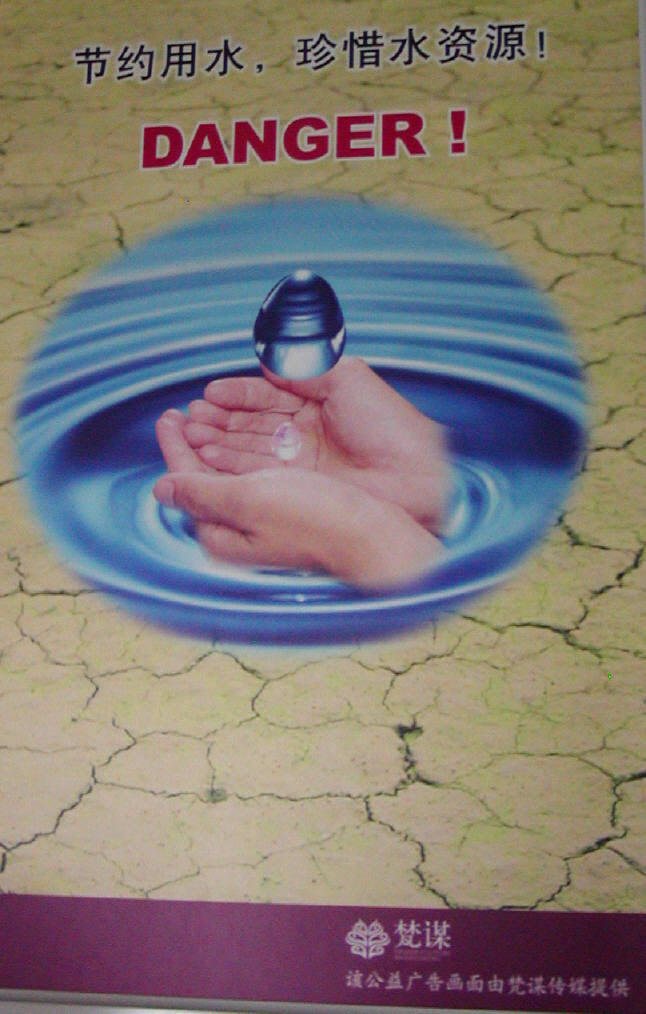
The MagLev demonstration train (no rails, instead magnets propel the vehicle) attains a speed of 195 miles per hour and incorporates the circle for its living space
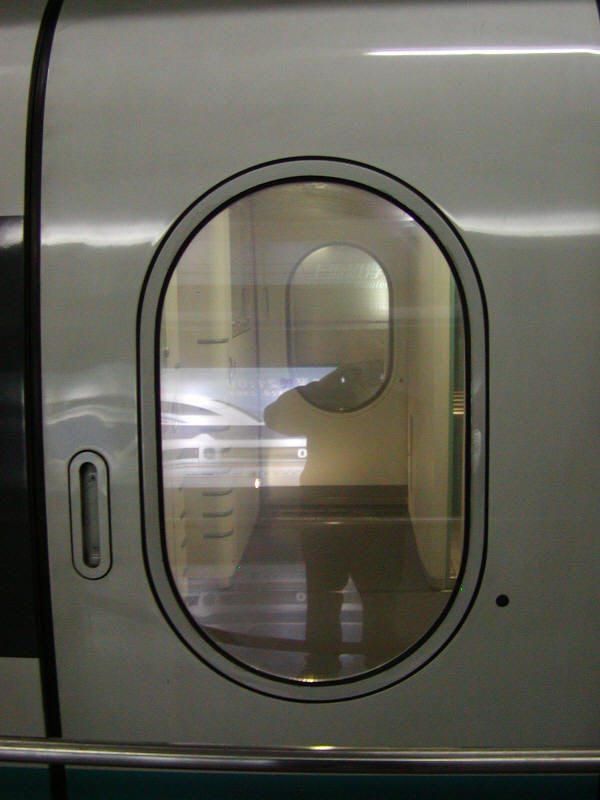
Even linear trees can be woven into the inter-relationality of the circle (Pudon airport)
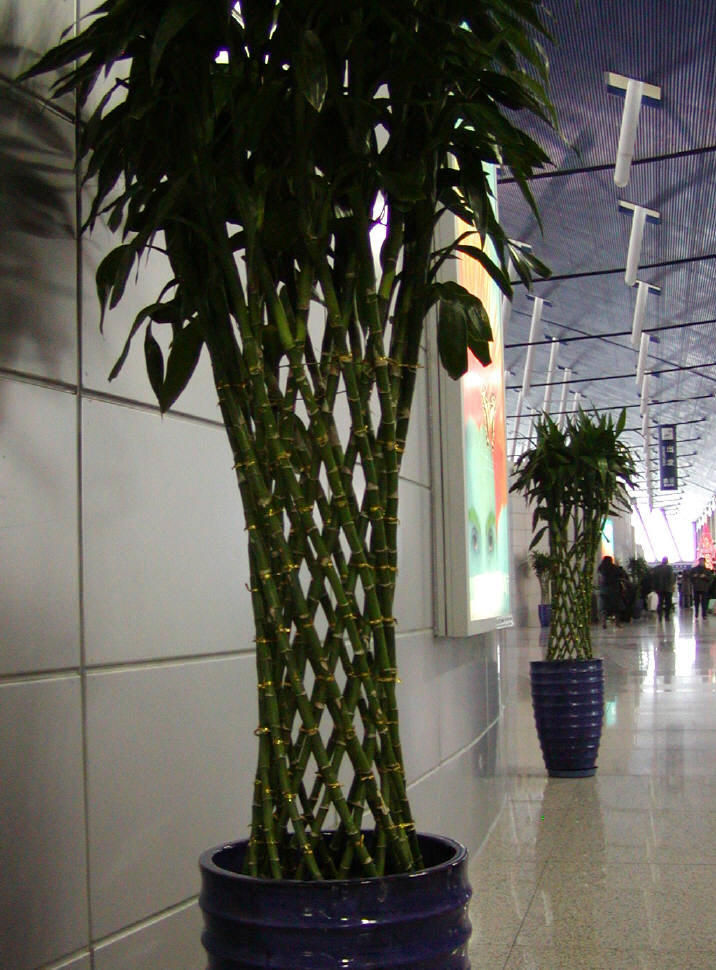
The circle incarnates the balance and co-dependence of collectivistic cultures (Chinese communism, Korean corporate socialism, Japanese conformity and normalism) where the provider of work was also the provider of housing and sometimes even of education, and is different from the independence of Western individualism.
The loser in sumo wrestling is the person who is forced to leave the circle, but the Western boxing "ring" is not even a circle: it is a square. In boxing, the loser is not the person who leave the enclosure but the person who is unable to stand and walk away. In the U.S. culture of the open frontier, the aim is to hit the baseball outside and beyond the ball park, and the goal of football is to run beyond the 100 yard enclosure and to kick the ball such that it transcends the field of play. The East is centered and the West is eccentric.
The linear world of capitalist progress, gantt charts, and quarterly reports must "localize" itself for the Asian market.
Intel already has the circle motif, and here promotes itself as akin to a sporting event or rock concert
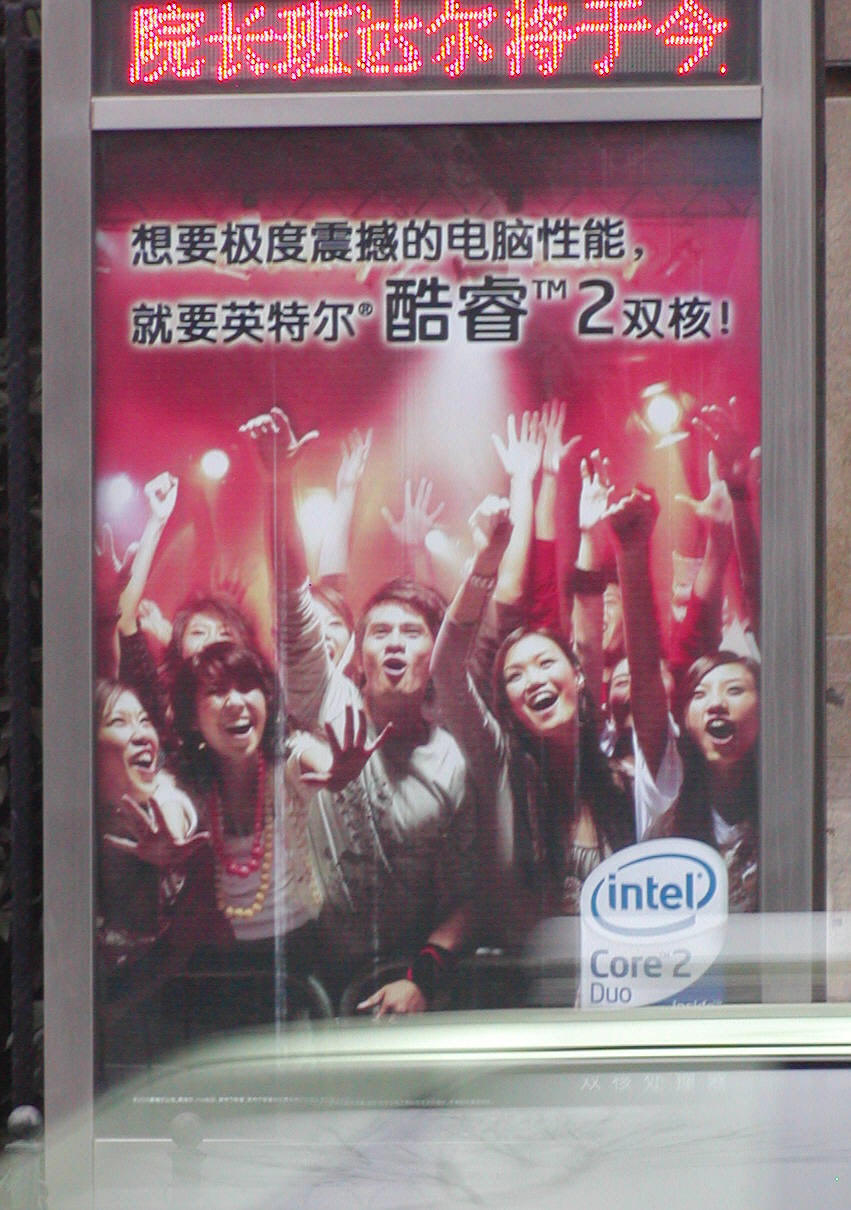
McDonald's opts for the red circle.
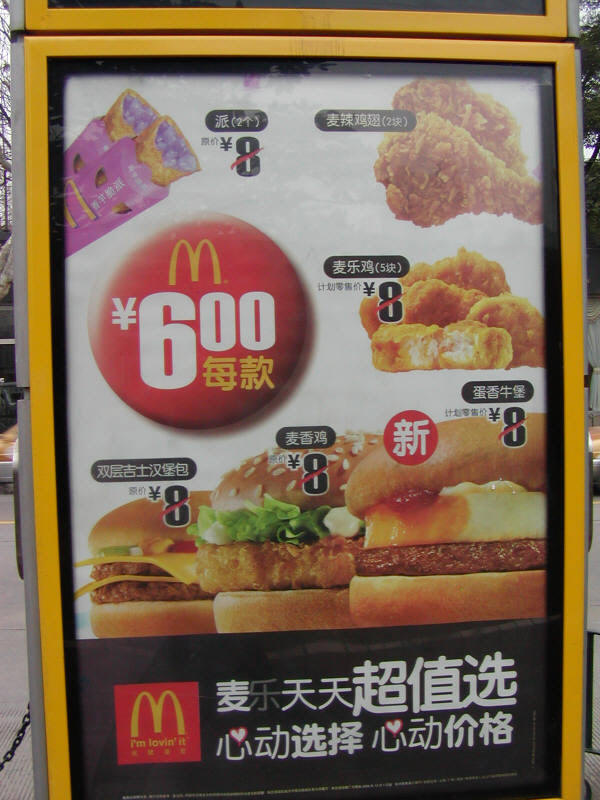
and the red meat circle
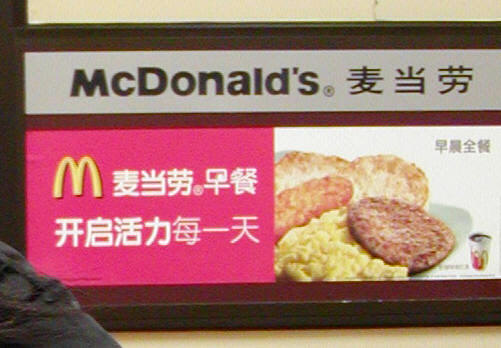
At Shanghai's airport, ExxonMobil presents the automobile in a circular ecology of green fields and blue skies. (Will driving bigger cars purify the planet?)
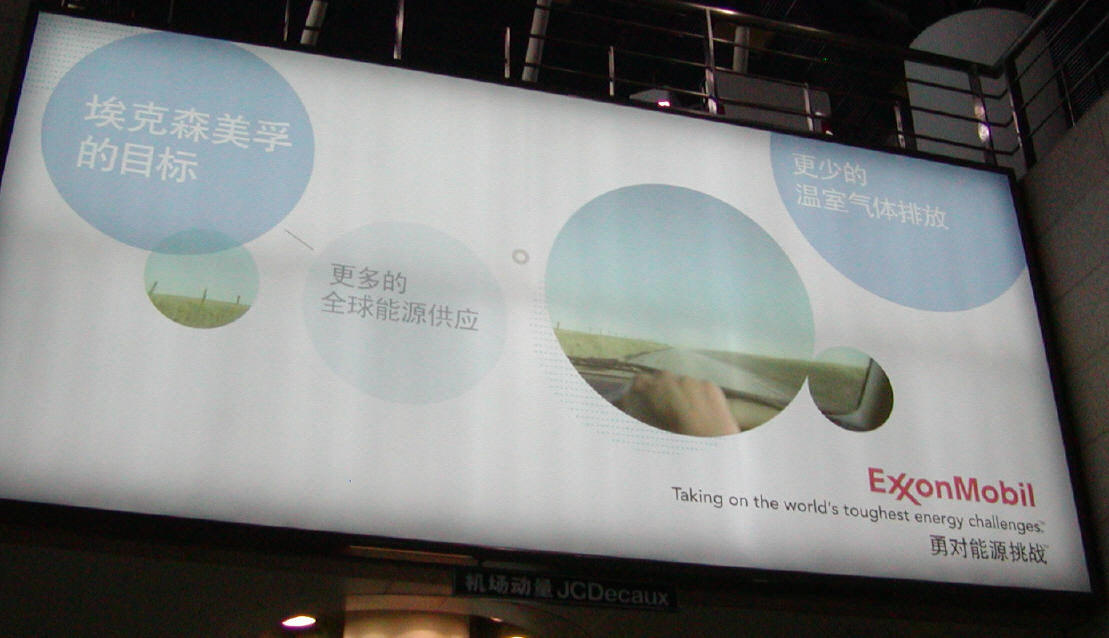
| page 1 | page 2 | page 3 | page 4 | page 5 |
| page 6 | page 7 | page 8 | page 9 | page 10 |